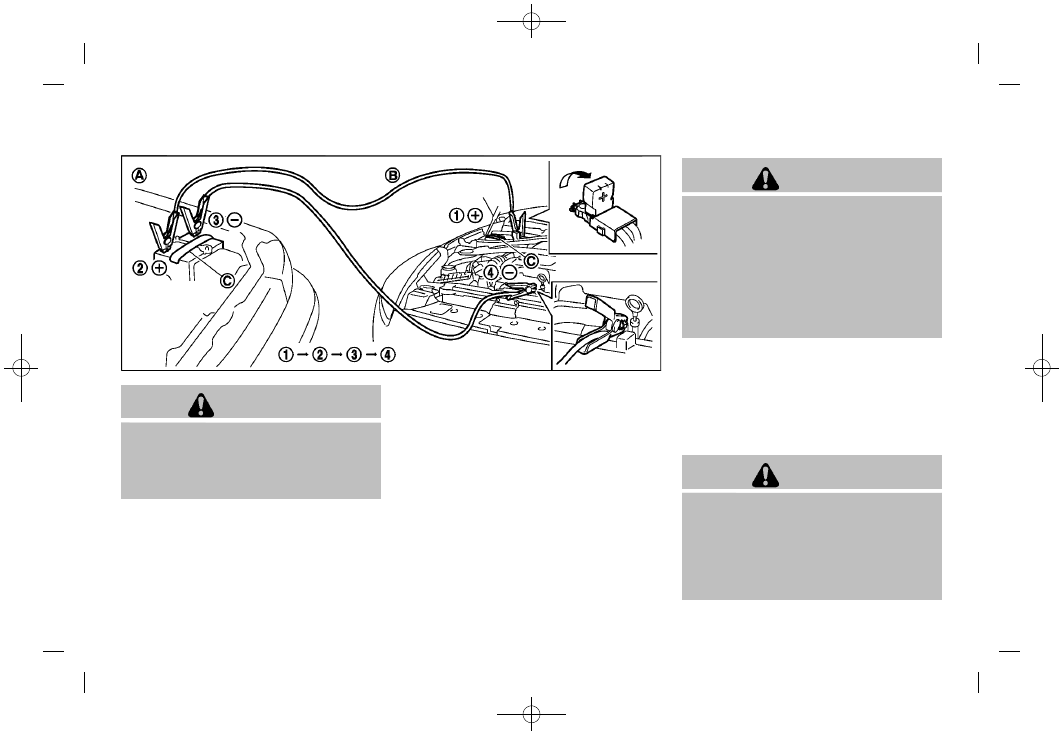Nissan 370Z Coupe (2017 year). Manual - part 22

(338,1)
[ Edit: 2016/ 2/ 22
Model: 2017MY NISSAN 370Z(Z34) OM17E00Z34U0 ]
6-16
In case of emergency
SCE0791
WARNING
Always follow the instructions below.
Failure to do so could result in damage
to the charging system and cause
personal injury.
1. If the booster battery is in another vehicle
*
A
, position the two vehicles (
*
A
and
*
B
)
to bring their batteries into close proximity to
each other.
Do not allow the two vehicles to touch.
2. Apply parking brake. Move the shift lever to
the P (Park) position (Automatic transmis-
sion models). Move the shift lever to the N
(Neutral) position (Manual transmission
models). Switch off all unnecessary elec-
trical systems (light, heater, air conditioner,
etc.).
3. Remove vent caps on the battery (if so
equipped). Cover the battery with a firmly
wrung out moist cloth
*
C
to reduce
explosion hazard.
4. Connect jumper cables in the sequence as
illustrated (
*
1
?
*
2
?
*
3
?
*
4
).
CAUTION
.
Always connect positive (+) to posi-
tive (+) and negative (
−) to body
ground (as illustrated) — not to the
battery.
.
Make sure the jumper cables do not
touch moving parts in the engine
compartment and that clamps do
not contact any other metal.
5. Start the engine of the booster vehicle
*
A
and let it run for a few minutes.
6. Keep the engine speed of the booster
vehicle
*
A
at about 2,000 rpm, and start
the engine of the vehicle being jump started
*
B
.
CAUTION
Do not keep the starter motor engaged
for more than 10 seconds. If the engine
does not start right away, push the
ignition switch to the OFF position
and wait 10 seconds before trying
again.
Condition: